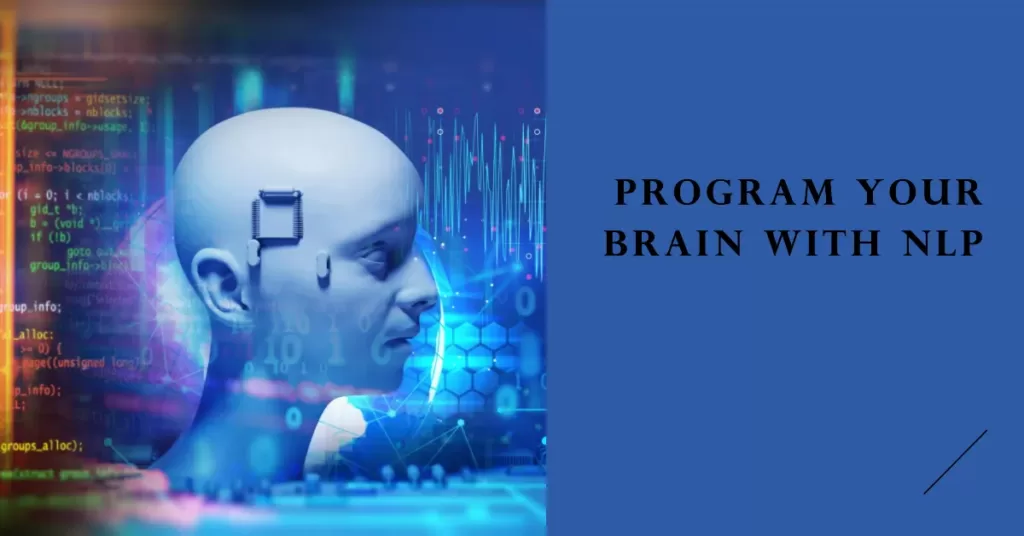Are you tired of feeling stuck in the same patterns and limiting beliefs? Do you wish to break free from the shackles of your own mind and achieve your full potential? Mindset mastery and NLP (Neuro-Linguistic Programming) techniques can help you do just that.
Your mindset plays a crucial role in determining the course of your life. Your thoughts and beliefs shape your reality, influencing everything from the decisions you make to the way you interact with others. By mastering your mindset, you can take control of your life, overcome self-limiting beliefs, and unlock a world of possibilities. And with NLP techniques, you can reprogram your subconscious mind for success, creating empowering beliefs and habits that propel you toward achieving your goals. In this article, we’ll explore how mindset mastery and NLP can transform your life, helping you break free from limitations and live a life filled with purpose and fulfillment.
Table of Contents
Key Takeaways
- Mindset plays a crucial role in determining the course of one’s life, with a growth mindset leading to greater achievement and resilience.
- Self-limiting beliefs are negative thought patterns that hold us back from achieving goals and living our best lives, but NLP techniques like reframing and visualization can help overcome them.
- Empowering beliefs help one see oneself as capable, deserving, and worthy of success, and strategies for creating them include positive affirmations, visualization, and focusing on progress.
- Practicing NLP techniques can improve communication skills, change the way one sees oneself, and help overcome limiting beliefs rooted in past experiences or negative programming.
Understanding the Power of Your Mindset
You might not realize it, but your mindset has a tremendous impact on your success and happiness in life. Did you know that studies have shown that having a growth mindset can lead to greater achievement and resilience?
A growth mindset is the belief that our abilities can be developed through hard work, dedication, and perseverance. This mindset emphasizes learning over innate talent or intelligence. People with a growth mindset see challenges as opportunities for growth and are willing to put in the effort to improve.
On the other hand, a fixed mindset is the belief that our abilities are predetermined by factors such as genetics or natural talent. This type of thinking can lead to feelings of helplessness and defeat when faced with obstacles or setbacks.
By understanding the power of your mindset and adopting a growth-oriented perspective, you open yourself up to endless possibilities for personal and professional development. With this type of thinking, you will approach challenges with optimism rather than fear and view failures as opportunities for learning and improvement. So take control of your thoughts, beliefs, and attitudes – they hold the key to unlocking your full potential!
Identifying and Overcoming Self-Limiting Beliefs
Feeling trapped by our own beliefs can be overwhelming, but acknowledging and challenging these self-limiting thoughts is crucial for personal growth. Self-limiting beliefs are the negative thought patterns that hold us back from achieving our goals and living our best lives. They often stem from past experiences or societal conditioning and can manifest as fears, doubts, insecurities, or feelings of inadequacy. These beliefs create a mental barrier that prevents us from taking risks or pursuing our dreams.
To identify self-limiting beliefs, start by paying attention to your thoughts and emotions when faced with challenges or opportunities. Ask yourself if your reactions are motivated by fear or a lack of confidence. Then, examine those beliefs more closely to determine if they are rooted in reality or simply assumptions you’ve made about yourself based on past experiences. For example, if you believe that you’re not good enough to pursue a certain career path because you failed a test in high school, challenge that belief by looking at all the successes you’ve had since then.
Once you’ve identified your self-limiting beliefs, it’s time to overcome them using NLP techniques like reframing and visualization. Reframing involves changing the way you think about a situation by focusing on positive aspects instead of negative ones. Visualization involves creating mental images of success and achievement to boost confidence and motivation. By practicing these techniques consistently over time, you can rewire your brain to think positively and break free from limiting beliefs.
Identifying and overcoming self-limiting beliefs is crucial for achieving personal growth and finding freedom in life. By recognizing negative thought patterns and replacing them with positive ones through NLP techniques like reframing and visualization, we can unlock our full potential and live fulfilling lives without limits. So take control of your mindset today – challenge those limiting thoughts holding you back and embrace the power within yourself to achieve greatness!
| Negative Thought | Positive Reframe | Affirmation |
|---|---|---|
| I’m not good enough | I am capable of learning and improving | I am enough, just as I am |
| I always mess things up | Mistakes are opportunities to learn and grow | I trust in my ability to handle any situation that comes my way |
| Nobody will ever love me | There is someone out there who will appreciate and love me for who I am | I deserve love and happiness, just like everyone else |
Creating Empowering Beliefs
Transforming your beliefs can unlock a world of possibilities and lead to a more fulfilling life. Creating empowering beliefs is the key to achieving this transformation. Empowering beliefs are those that help you see yourself as capable, deserving, and worthy of success. They support you in taking positive action toward your goals and overcoming obstacles along the way.
To create empowering beliefs, it is important to identify what limiting beliefs are holding you back. These may be thoughts such as “I’m not good enough” or “I don’t have what it takes”. Once you have identified them, challenge these beliefs by asking yourself if they are really true. More often than not, these limiting beliefs are based on assumptions or past experiences that no longer serve us.
Here are some strategies for creating empowering beliefs:
- Use positive affirmations: Affirmations are statements that reinforce positive qualities about yourself. Repeat them daily until they become ingrained in your subconscious mind.
- Visualize success: Visualize yourself achieving your goals and experiencing the emotions associated with success. This reinforces the belief that you can achieve anything you set your mind to.
- Surround yourself with positivity: Surround yourself with people who support and encourage your growth. Read books or listen to podcasts that inspire you.
- Focus on progress, not perfection: Recognize that mistakes happen and use them as opportunities for growth instead of beating yourself up over them.
Creating empowering beliefs is an ongoing process that requires consistent effort. However, the reward of this practice can be life-changing. By transforming your mindset through NLP techniques like creating empowering beliefs, you can unleash your full potential and live a more fulfilling life filled with freedom and abundance.
Practicing NLP Techniques
Practicing NLP techniques can be a fun and effective way to improve your communication skills and achieve your goals. By using NLP, you can learn how to communicate more effectively with others, which will help you build stronger relationships and achieve greater success in both your personal and professional life.
One of the key principles of NLP is that our thoughts, feelings, and behaviors are all interconnected. By changing one aspect of our thinking or behavior, we can create positive changes in other areas of our lives. For example, if you have a negative self-image, practicing NLP techniques can help you change the way you see yourself. This can lead to increased confidence and self-esteem, which will make it easier for you to achieve your goals.
Another important aspect of NLP is learning how to control your emotions. When we experience strong emotions like anger or anxiety, they can often cloud our judgment and prevent us from making good decisions. By learning how to manage these emotions through NLP techniques like visualization or anchoring, we can maintain a calm and focused mindset even in stressful situations.
Practicing NLP techniques can help you overcome limiting beliefs that may be holding you back from achieving your full potential. These beliefs may be rooted in past experiences or negative programming from childhood. By identifying these beliefs and reframing them in a more positive light through techniques like timeline therapy or reframing, we can break free from their hold on us and move forward toward success.
In conclusion, practicing NLP techniques is an effective way to improve communication skills, manage emotions better, overcome limiting beliefs, and transform into the best version of yourself possible all while having fun doing it! With regular practice and dedication, anyone has the power to master their mindset with NLP!
Applying Mindset Mastery and NLP in Daily Life

As you continue to practice mindset mastery and NLP techniques, it’s important to apply them in your daily life. This means developing strategies for maintaining a positive mindset, using NLP techniques in everyday situations, and achieving lasting change through the combination of both. By consistently implementing these practices, you can transform your thinking patterns and behavior to achieve success and fulfillment in all aspects of life.
The Swish Pattern
The NLP Swish pattern is a powerful technique designed to change undesirable behavior patterns and develop a more positive mindset. Here’s how it can work for you.
Firstly, visualize a situation where you tend to engage in a behavior you want to change. Make this an image that represents your old pattern. This could be anything – feeling anxious before a presentation, getting angry in traffic, or procrastinating on a project. This image can be vivid, clear, and closer to your perspective.
Secondly, think about how would you like to act or feel instead. Create an image that represents this new behavior or feeling – feeling confident during the presentation, remaining calm in traffic, or working productively on the project. Make this second image small and distant.
Now comes the “swish” part. Imagine the small image of the new behavior placed in front of the larger image. Gradually, enlarge the small image – “swishing” it up – so that it becomes the big, clear, and vivid image near to you while the previous large image becomes small and distant. Simultaneously, the behavior associated with the bigger image should be replaced by the one with the smaller image.
Repeat this process until simply thinking about the undesirable behavior automatically triggers the more desirable one in your mind. It is also important to practice this regularly to fully integrate the new behavior into your subconscious mind.
The Swish Pattern can help increase your positive mindset by replacing unproductive thought patterns with more advantageous ones. By regularly practicing this technique, you promote the development of positive behavior and attitudes, and gradually, these new patterns become your automatic response — pushing you toward your goals while aiding you to react positively in challenging situations. Mental imagery is powerful, and the Swish technique harnesses this power to help you become the best version of yourself.
The Meta Model
The Meta Model is a cognitive linguistic therapy technique. It is a tool for comprehending and clarifying our understanding of the language we and others use. It helps us communicate more effectively and can be used to challenge and broaden our perspectives on the way we view and experience the world around us.
The Meta Model works by applying a set of specific questioning techniques to gain more detailed information about ambiguous or vague statements. The technique is broken down into three main categories: Deletions, Distortions, and Generalizations.
- Deletions: We often omit information when communicating. Questions like “Who exactly?” “What specifically?” can help recover the deleted information.
- Distortions: Sometimes people distort information, either intentionally or unintentionally. Questions like “How specifically did that happen?”, “In what way exactly?” can help uncover the real meaning.
- Generalizations: Occasionally, people make broad statements without considering exceptions or individual circumstances. Questions like “How does this always happen?”, “In what situations would this not be true?”, etc. can challenge generalizations.
The Meta Model is a powerful questioning technique that you can use regularly. For example, in your daily conversations, whether personal or business, the Meta Model can help you understand others better, gain clarity, and resolve misunderstandings.
If your friend says, “I am stressed out”, using the Meta Model, you could ask, “Can you tell me specifically what is causing you to stress?” This technique can also be used in problem-solving situations to get a more detailed understanding of the problem.
Remember that the intent is always to help and gain a better understanding, so use this model thoughtfully and respectfully. By integrating the Meta Model into your daily communication, you can improve not only your understanding of others but also foster deeper, more meaningful connections.
Achieving Lasting Change through Mindset Mastery and NLP
Achieving lasting change in your life requires a deep understanding of your own subconscious patterns and the ability to reprogram them. This is where mindset mastery and NLP come into play. By mastering your mindset, you gain control over your thoughts, emotions, and actions, allowing you to create positive changes in your life.
Through NLP techniques such as the ones mentioned above, you can reprogram limiting beliefs that hold you back from achieving success. If you would like to learn more techniques like that, I recommend reading my book “High-Performance Mindset: Mental Conditioning in Practice” – it covers multiple strategies, tips, and techniques allowing you to transform yourself and improve your performance in virtually every area of life.




